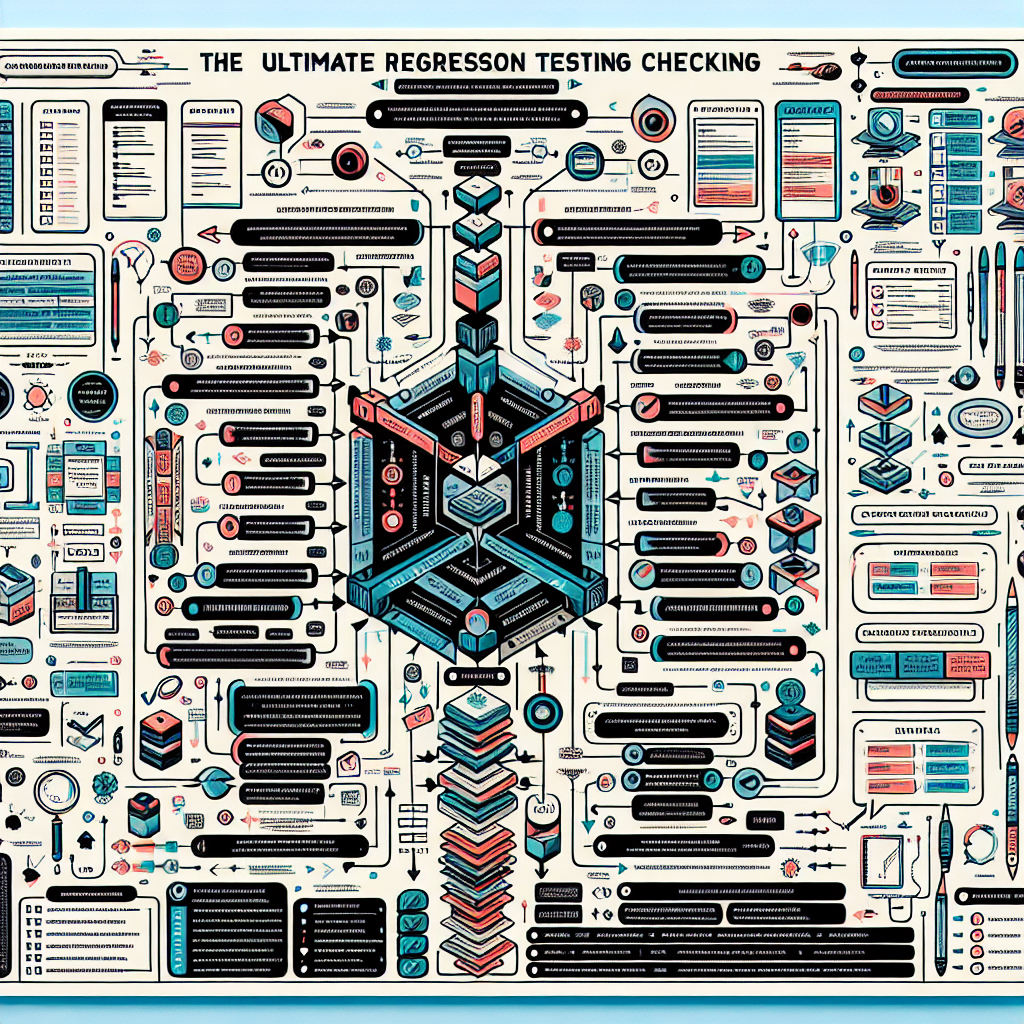Introduction to Regression Testing Checklist Framework
In the fast-evolving world of software development, ensuring that new code changes do not negatively impact existing functionalities is crucial. This is where a regression testing checklist framework becomes an essential asset for quality assurance teams. By establishing a systematic approach and leveraging a reliable checklist, organizations can streamline their regression testing process, improve test coverage, and ensure product stability with every release.
What is Regression Testing?
Regression testing is a type of software testing that verifies whether recent code changes have adversely affected the existing functionalities of an application. The primary goal is to detect software regressions and ensure the integrity of the application after enhancements, bug fixes, or other modifications. A well-designed regression testing framework helps to automate and manage this process efficiently.
- Ensures stability after updates
- Supports continuous integration and delivery
- Minimizes risks of introducing new defects
Why Do You Need a Regression Testing Checklist Framework?
Implementing a regression testing checklist framework is vital for:
- Standardization: Ensures that testing procedures remain consistent across different releases and teams.
- Efficiency: Reduces repetitive work by providing reusable test scenarios and scripts.
- Coverage: Improves the scope of testing by ensuring all critical functionalities are validated.
- Traceability: Makes it easier to track test execution and results over time.
Key Components of Regression Testing Checklist Framework
A robust regression testing framework is built upon several core components. Here’s what you should include in your checklist framework:
1. Test Case Repository
Maintain a centralized library of test cases for reuse and easy access. Tag test cases with metadata for efficient filtering and execution.
2. Test Data Management
Ensure you have mechanisms for preparing, managing, and cleaning test data to maintain the reliability of your regression tests.
3. Automation Tools Integration
Integrate popular automation tools to accelerate regression cycles, such as Selenium, JUnit, or TestNG, to support continuous testing.
4. Reporting & Analytics
Leverage dashboards and detailed reports to analyze test coverage, defect trends, and execution results for informed decision-making.
Regression Testing Checklist: Step-by-Step Framework
Building a comprehensive regression testing checklist is fundamental to the success of your framework. Here’s a practical checklist you can adapt for your projects:
-
Identify Regression Test Scope:
- List all core functionalities and modules impacted by recent changes.
- Prioritize test cases based on business criticality and risk assessment.
-
Prepare Test Environment:
- Set up environments that closely mimic production settings.
- Verify that databases, APIs, and integrations are up-to-date.
-
Update Test Cases:
- Revise or add new test cases reflecting new features or bug fixes.
- Remove obsolete or redundant test scenarios.
-
Automate Where Possible:
- Implement automation for repetitive and high-impact test cases.
- Schedule automated test runs in your CI/CD pipeline.
-
Execute Tests:
- Run both manual and automated regression tests.
- Document test outcomes with screenshots or logs for traceability.
-
Log and Report Defects:
- Report identified defects with detailed reproduction steps.
- Collaborate with developers to resolve issues quickly.
-
Analyze Results and Refine Processes:
- Review test coverage and defect trends for process improvement.
- Update your checklist framework based on lessons learned.
Related Concepts and LSI Keywords in Regression Testing
To further enhance your regression testing framework, consider these related concepts and LSI keywords:
- Automated regression testing
- Test case prioritization
- Continuous integration testing
- Smoke testing vs regression testing
- Test suite maintenance
- Defect tracking system
- Test execution reports
- Software quality assurance
- Risk-based testing
Best Practices for Regression Testing Checklist Framework Implementation
To maximize the effectiveness of your regression testing checklist framework, follow these proven best practices:
- Keep your checklist dynamic: Regularly review and update it to align with evolving project requirements.
- Leverage automation wisely: Automate repetitive and stable test cases, while keeping exploratory testing manual as needed.
- Maintain clear documentation: Ensure all test cases, results, and changes are well-documented for audit and knowledge transfer.
- Engage stakeholders: Collaborate with development, business analysts, and product owners for comprehensive coverage.
- Monitor metrics: Use test coverage, defect leakage, and mean time to detect metrics for continuous process improvement.
Sample Regression Testing Checklist Template
| Step | Description | Status | Comments |
|---|---|---|---|
| Identify affected modules | Review change logs and impact analysis | Pending / Done | |
| Update test cases | Modify existing cases or add new ones as needed | Pending / Done | |
| Environment setup | Prepare test environment and data | Pending / Done | |
| Test execution | Run manual and automated tests | Pending / Done | |
| Defect logging | Report and track any issues found | Pending / Done | |
| Report generation | Summarize findings and results | Pending / Done |
Conclusion: Elevate Your Software Quality with a Regression Testing Checklist Framework
A regression testing checklist framework is indispensable for businesses aiming for robust, reliable software releases. By following a structured framework, utilizing automation, and adopting industry best practices, you can significantly reduce the risk of undetected bugs and ensure seamless user experiences. Continuously refine your processes, stay updated with new tools and methodologies, and empower your QA team for success in every release cycle.

